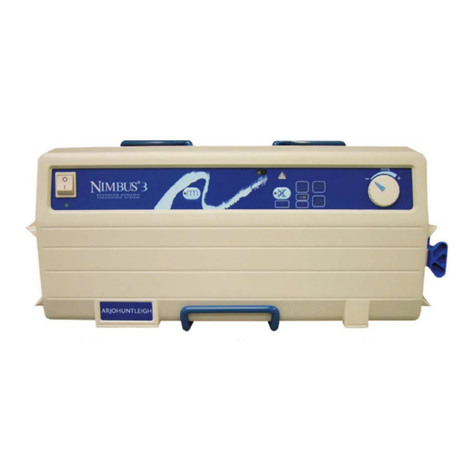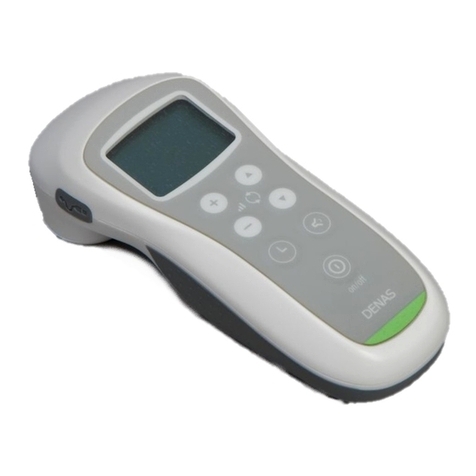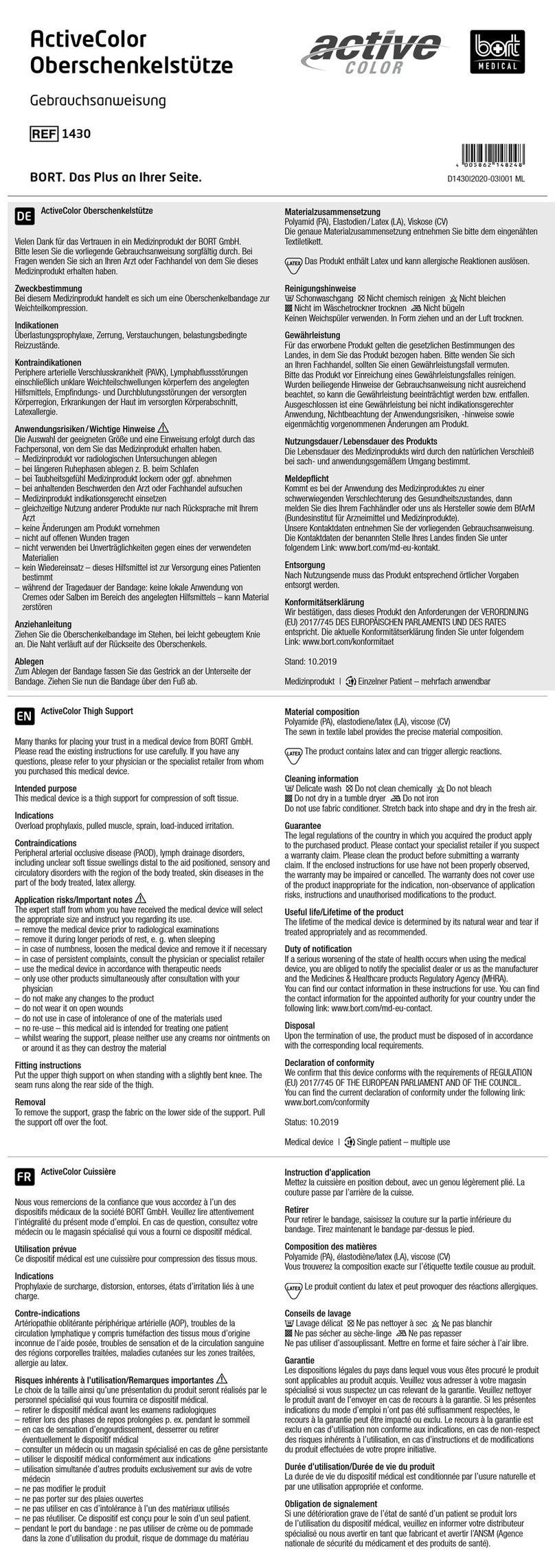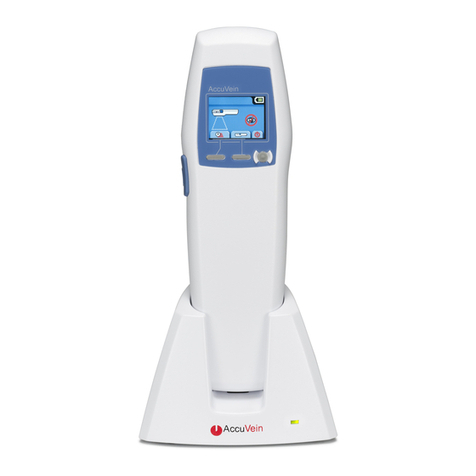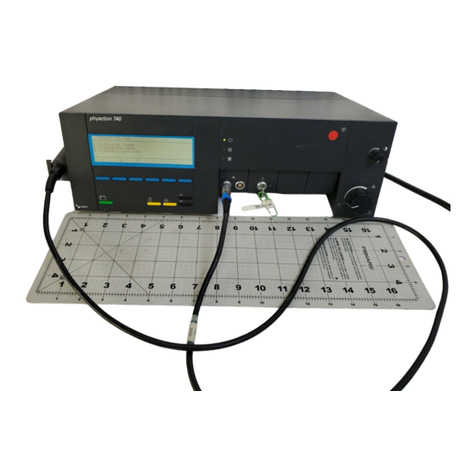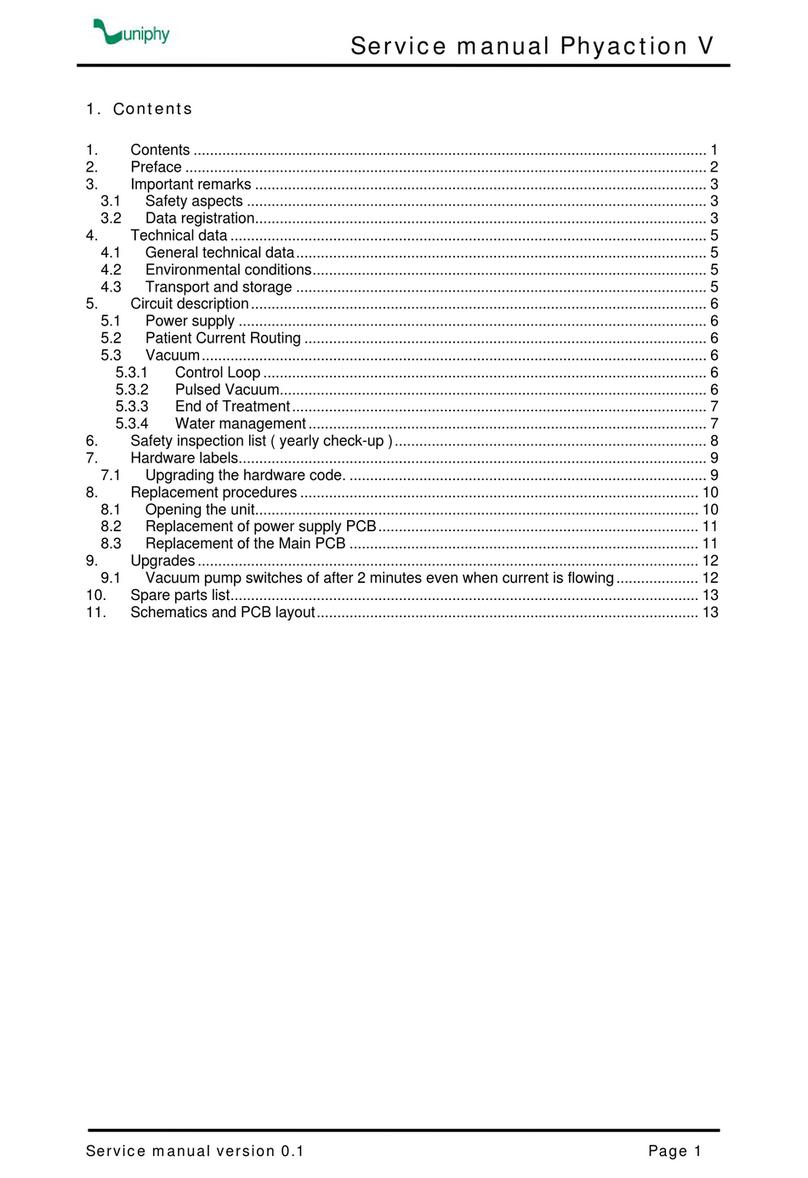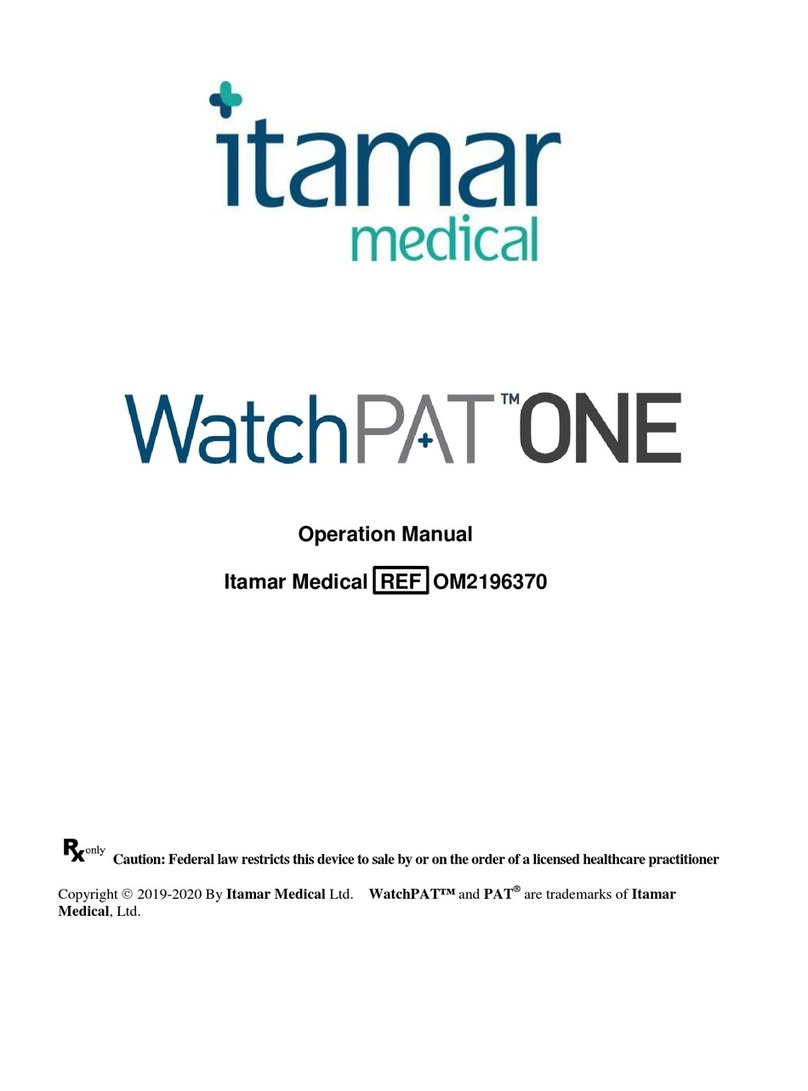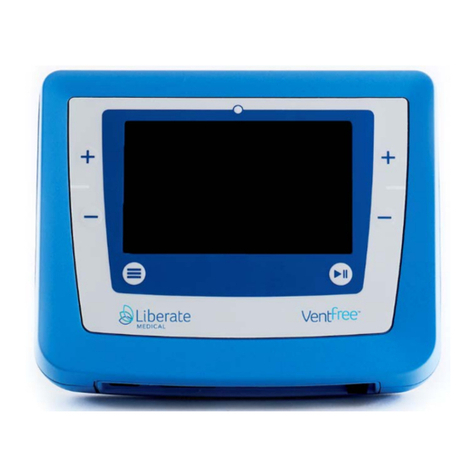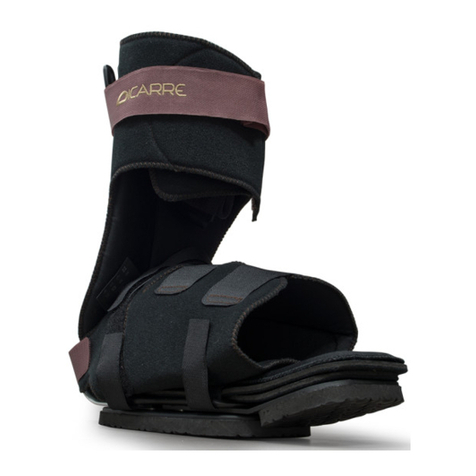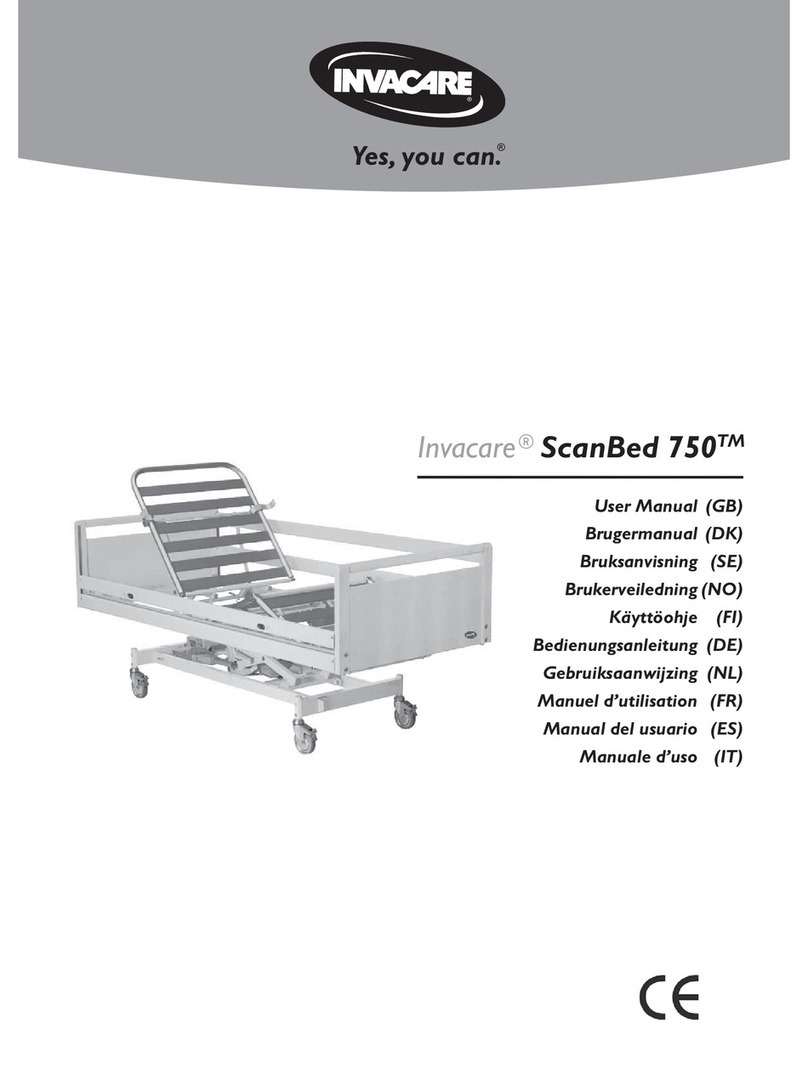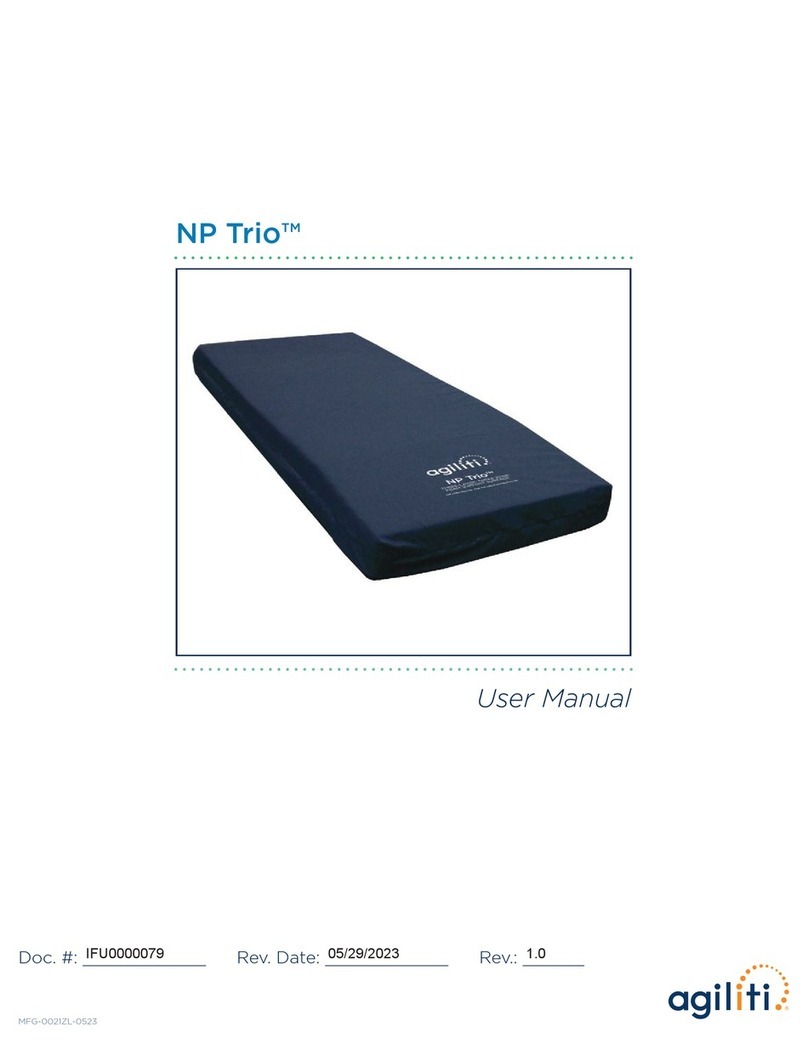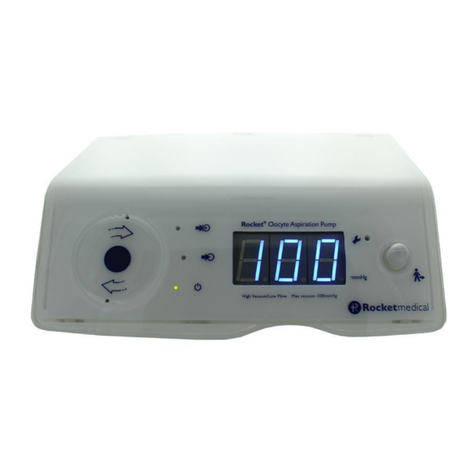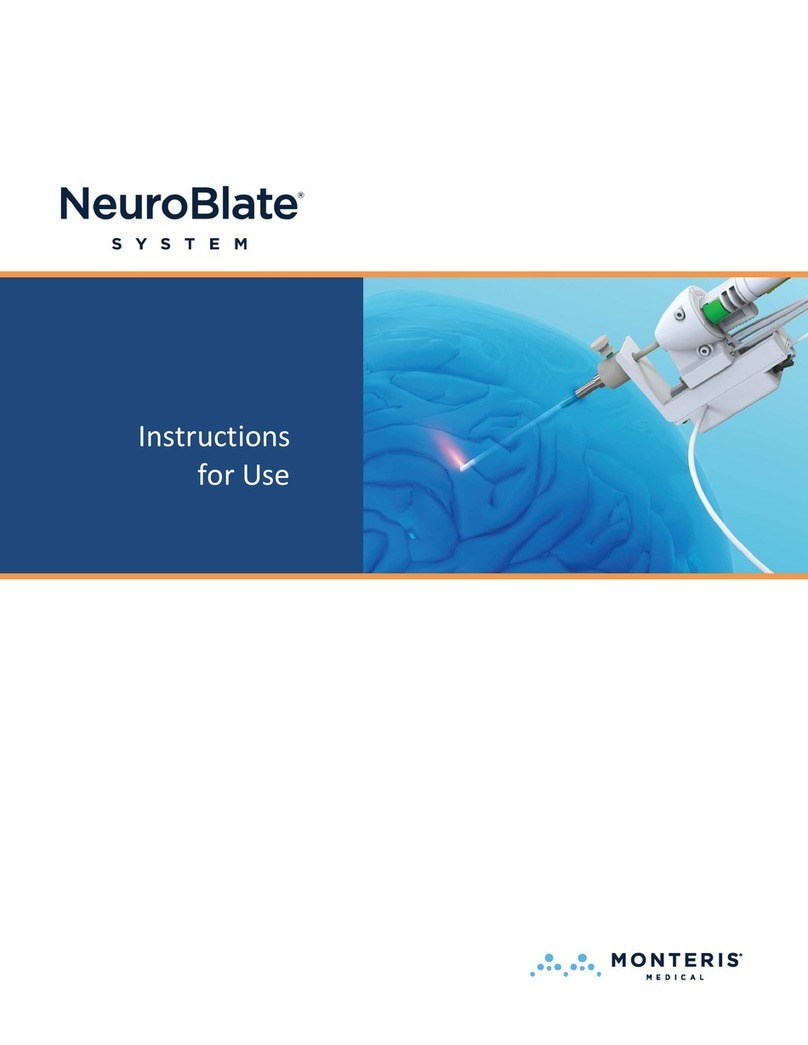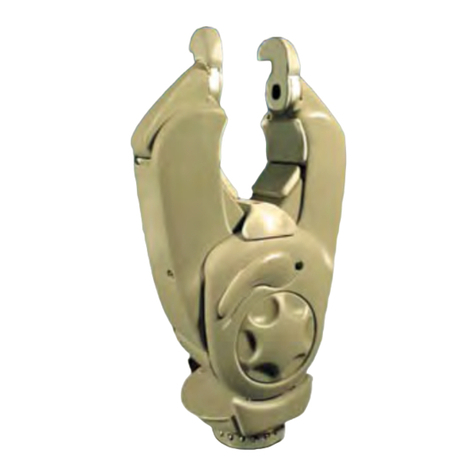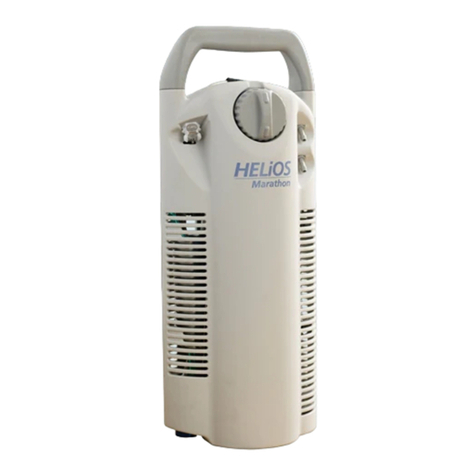
2. THEORY OF OPERATION Service information Phyaction 190 / 190i - Page 6
- 5 eight-bit wide I/O ports (4 in 8051)
- 2 eight-bit pulse width modulators (PWM) (N.A. in 8051)
- I2C bus for serial data transfer (N.A. in 8051)
- UART for serial data transfer (e.g. RS232)
- watchdog timer (N.A. in 8051)
Next to the microcontroller the following parts are present in the core:
- 8 kByte (expandable to 32 kByte) RAM data memory
- 1 Mbit EPROM program and constant data memory
- 256 byte I2C E2PROM non-volatile data memory
- 2 HCMOS IC's for decoding and buffering purposes
2.2.2 Keyboard
The keyboard is a matrix of 10 push buttons connected to the microcontroller via an I2C I/O expander. The
microcontroller software defines the function of each key. The user can use the keyboard to set and change a
number of parameters (such as the active treatment head, treatment frequency, duty-cycle, treatment time etc.)
2.2.3 Graphical user interface
A 240 x 64 dots LCD display with CFT backlight is used as graphical user interface. On it the user can see the
current function of the function keys, the parameters, the remaining treatment time, the selected intensity and
the resulting effective energy being radiated by the treatment head. Further the contact ration between
treatment head and patient is shown on the display.
2.2.4 Safety socket
The 4 mm banana safety socket is directly connected to the tin can of the ultrasound unit. This Tin can is the
'ground' of the circuitry, which is also connected to the metal front of the treatment heads. This socket can be
used for combination therapy with external electrotherapy appliances.
2.2.5 Serial interface
No serial interface is available to the user. Only with an opened apparatus the serial interface can be used for
testing purposes. This interface is a 5V-level RS232 interface (a direct connection to the UART of the
microcontroller). The interface is for extended service features (used by manufacturer only).
2.2.6 Power supply
The power supply is a conventional one with a mains transformer suited for medical purposes. It is equipped
with the required primary and secondary fuses, two bridge rectifiers and two capacitors. The unstabilised +29 V
is used to feed the ultrasound unit. In the ultrasound unit the +29 V is further used to create a controlled
ultrasound supply and two stabilized supplies of +24 V and +15 V.
The unstabilised +9 V is used to create a microcontroller controlled switchable +8 V for the LCD contrast and its
backlight and to create a +5 V for the logic components. A reset signal for the microcontroller and LCD is
generated when the +5 V comes in or when it drops below a certain voltage.
2.3 Ultrasound unit
The functional block diagram of the ultrasound unit is shown in figure 2.2. Since the signals to generate
ultrasound are made using a square wave of about 1 MHz or 3 MHz, it is necessary to encapsulate the
complete ultrasound unit, including the ultrasound crystal, in a metal case (a Faraday cage). In figure 2.2 the
metal case is indicated by the dashed line. The electronics is put into a 'tin can'. It will be clear that the
ultrasound treatment head cannot be put in the tin can, so to maintain the shielding the crystal is put in an
aluminium cup, while the signal wire from the electronics to the crystal is a double braided coaxial cable (double
shielded).
The keyboard is used to set the various parameters, such as duty-cycle, treatment time and frequency (1 MHz
or 3 MHz). The microcontroller computes the operating frequency of the crystal, using a couple of treatment
head parameters fed to the apparatus at installation time. The same head parameters are also used to
calculate the administered amount of ultrasound energy and the rate of contact between treatment surface and
patient. Keeping track of the treatment time is also done by the microcontroller.
